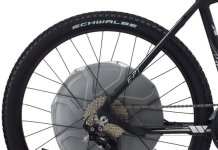speedmd
10 MW
Punx, is there a certain ratio of stator diameter to overall wheel diameter that is ideal? A Sweet spot. Miles looked at weight vs torque- efficiency on the ultimate hub thread. Stator width to diameter ratio that is ideal? My guess when looking at making a motor able to stall more often / longer without burning up, the larger the diameter ratio (motor stator to wheel diameter) the better, more than anything you can do in the control or winding options. There are tons of other things that can be tweaked.
To make revolutionary levels of improvement, many times it takes dozens of tiny ones added together.
To make revolutionary levels of improvement, many times it takes dozens of tiny ones added together.




